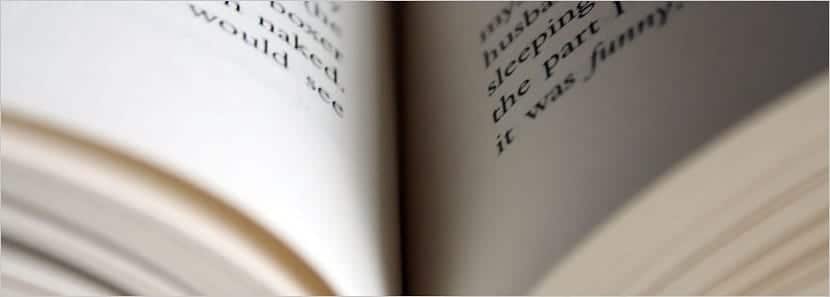
El text commentary is one of the most recurrent exercises in the subject of Language and literature during the Baccalaureate stage. But what exactly is making a text comment for? In this article we answer that question, many others and we tell you how to make a good text comment by following a few simple steps.
You will not resist any literary text if you follow these simple tips.
The text comment: What is it, objectives and how to do it
The text comment is an exercise that can be used to delve into literary works to get into the habit of understanding all its meaning. Its main objectives are to explain the message clearly and precisely, as well as to analyze how or with what linguistic means the text has been constructed.
Method to make a good text comment
If you want your text comments to be good and get a very good grade in the next selectivity exam, you must follow this method.
- Step 1: Make careful reading of the literary text that we have before us. This reading is the phase prior to the comment, that is, before starting the exercise it is necessary to read the text carefully and clearly understand what is said in it as well as the meaning of all its words and expressions (we recommend having a dictionary nearby to possible search for unknown words).
- Step 2: Locate the fragment or work, that is, to frame it in a context and time, to know who the author is who has written it (which will give us a very clear clue of its characteristics) and finally, if it is a brief fragment, to know what work it belongs to. .
- Step 3: We must specify the genre of literary text and the form of literary expression. That is, if the text belongs to the lyric, to the theater, to the narrative, etc. For example, if the text is written in verse, it will be time to make a metric description of it, with the measure of the verses, their rhyme, the stanzas, the name of the poem, etc. If, on the contrary, the text is narrative, we must carry out an analysis of the different elements, such as the character of the narrator, the action carried out, the characters that appear, the narrative framework, etc.
- Step 4: We will analyze the content. In this phase we will analyze the content as deeply as possible. For this, we must pay attention to and carefully analyze aspects such as the content structure, the theme, the central ideas of the text, secondary ideas, etc.
- Step 5: We will analyze the form. In this phase, we will specify how the content is reflected in the form. For example: if the author has wanted to express or convey bewilderment, fear, surprise, joy, etc.
- Step 6: Conclusion. It is the final part of our text comment. Here, we will summarize the different aspects that we have dealt with in the commentary, to give a brief and joint idea of what we have exposed. The interpretation that we make in this conclusion will be valid as long as it agrees with all the points previously exposed in the text comment. In this conclusion, we can also incorporate our personal impression, our satisfaction with the reading, the feelings it has transmitted to us, the assessment of its effectiveness, etc.

Making a good text comment, even if we have a very detailed step-by-step, also depends on practice, on the reading habit we have (the greater the number of readings behind us, the greater the capacity for analysis and literary synthesis we will have), on the difficulty of the text that they put us in front of (it is not the same to analyze "Moroccan Letters" of Cadalso than a poetry of Góngora), etc.
Therefore, we encourage you from Actualidad Literatura, not to block yourself in front of this type of exercises, because perhaps in the future you will be an editor or publisher of an important publishing firm or you simply like reading and books so much that you decide to make a literary blog in which you put hundreds of reviews . The literary reviews they are commentaries on complete works. But we will talk about these in another article.
I am reading the comments of the text comments!
Well, I have been very welcome if I do not suspend language at last with this
Very clear!!!!
This article was very interesting and educational for us readers, and I am completely sure that it will help me to make comments in a better way from now on.
It is a very good article that serves as a guide when making a text comment, since it explains in great detail each of the steps to follow in the process.
Very interesting!!
You have to focus on the ideas presented in the text and not on the anecdotes or the plot. You can include evaluations about other aspects of the text, such as the author's attitude towards the text: for example, if he is objective or critical of the facts or with the characters or the type of language he uses.
I found it very interesting !!
You have to focus on the ideas presented in the text and not on the anecdotes or the plot. You can include evaluations about other aspects of the text, such as the author's attitude towards the text: for example, if he is objective or critical of the facts or with the characters or the type of language he uses.